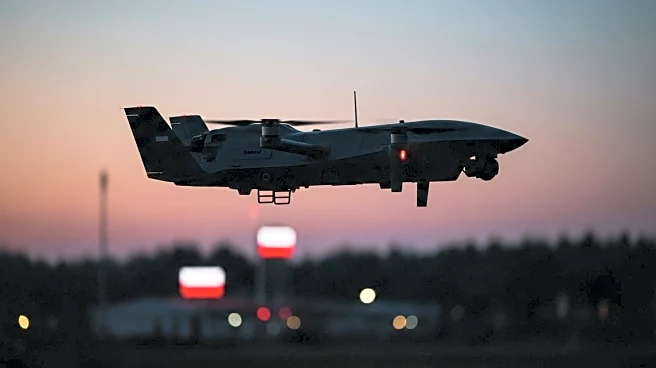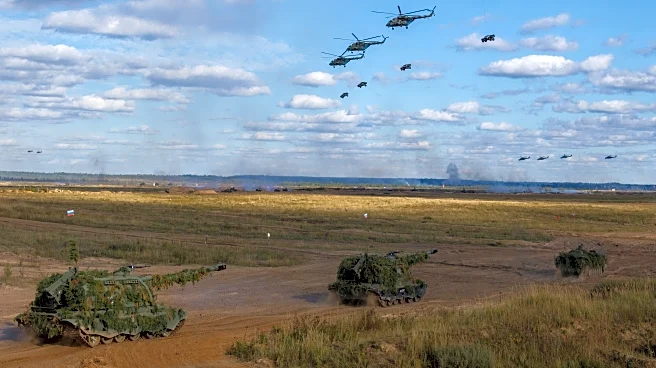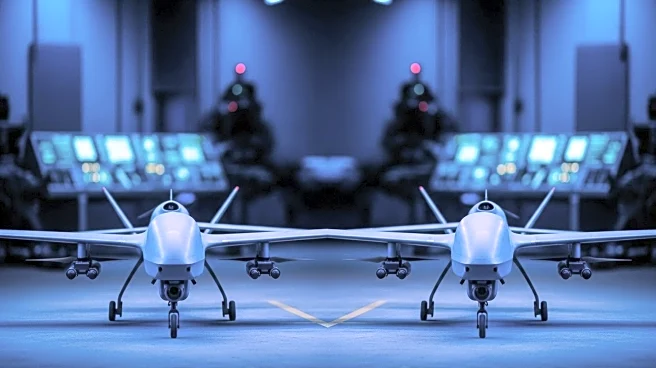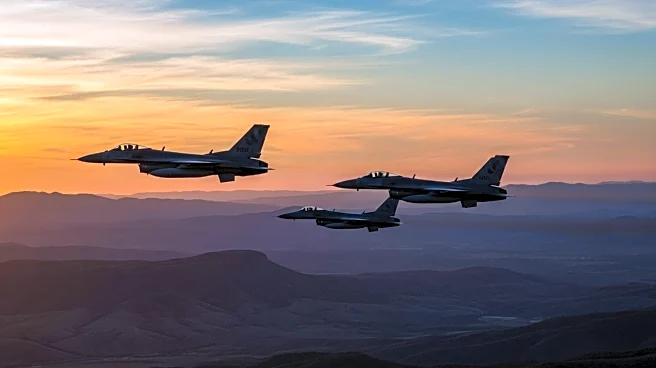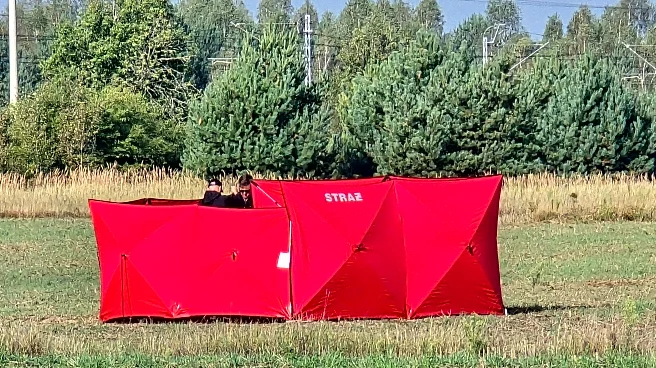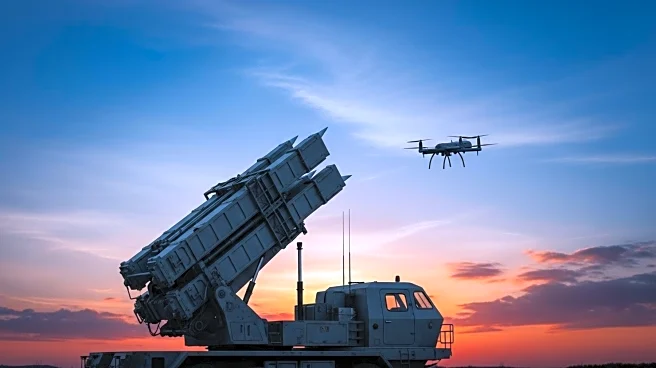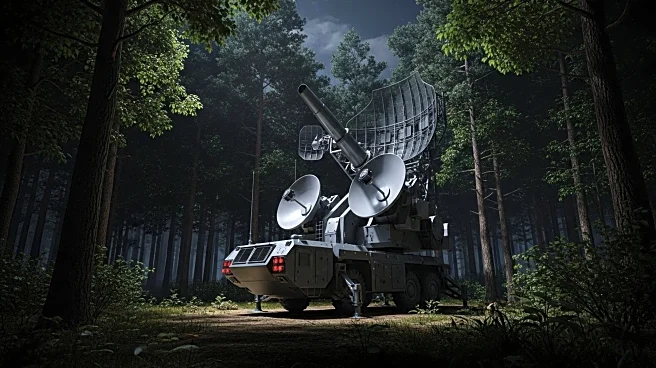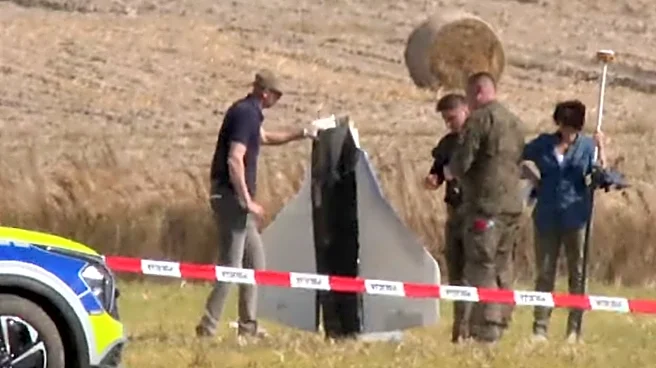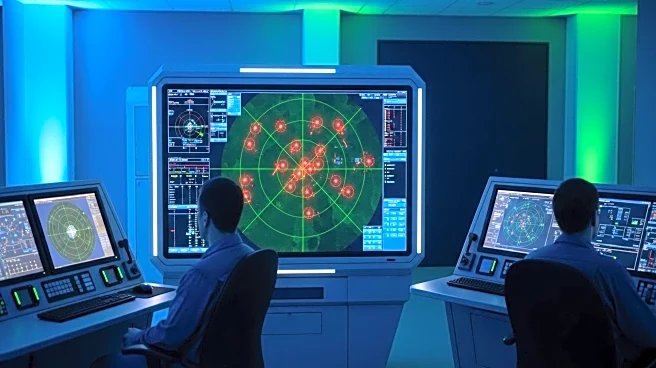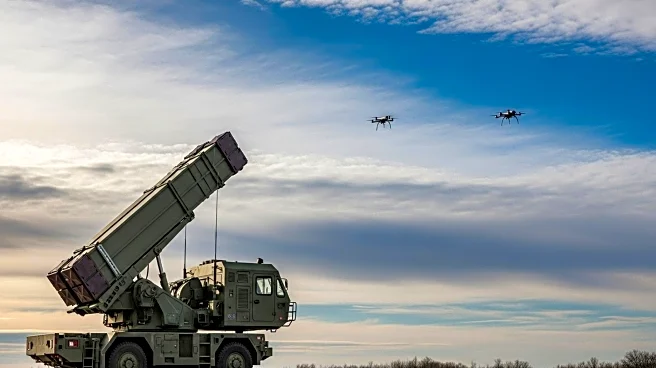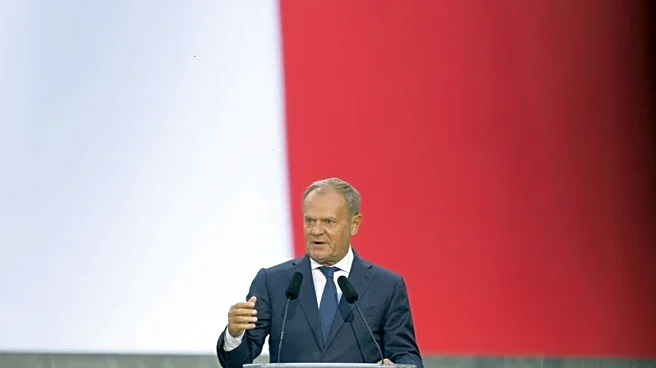What's Happening?
Tensions in Eastern Europe have escalated as Russia and Belarus commence their joint military exercises, Zapad 2025, in Belarus. The drills, which simulate operations such as repelling airstrikes and sabotage, have raised concerns among neighboring countries, including Ukraine, Latvia, Lithuania, and Poland. Polish Prime Minister Donald Tusk reported that multiple Russian drones, believed to have originated from Belarus, entered Polish airspace and were intercepted. Despite Russia's claims that Poland was not targeted, skepticism remains among European leaders. The exercises involve approximately 6,000 to 7,000 troops, with maneuvers occurring near Barysaw in Belarus and partially within Russia, close to the borders of Poland and Lithuania. The drills also focus on planning the use of nuclear weapons, reflecting broader concerns about nuclear posture in the region.
Why It's Important?
The joint military exercises by Russia and Belarus have significant implications for regional security and stability. The incursion of Russian drones into Polish airspace highlights the potential for military escalation and the risk of broader conflict involving NATO members. Poland's interception of the drones and its subsequent military readiness drills underscore the heightened state of alert among Eastern European nations. The exercises also emphasize the strategic importance of the Suwalki Gap, a corridor linking Poland and Lithuania, which could become a flashpoint in the event of further provocations. The focus on nuclear capabilities during the drills adds another layer of complexity, raising concerns about the potential deployment of Russian nuclear arms in Belarus.
What's Next?
Poland is conducting its own military drills in response to the joint exercises by Russia and Belarus, emphasizing readiness for various scenarios. NATO members remain apprehensive, with Lithuania's President Gitanas Nauseda stating that the country and its allies are prepared for unexpected developments. Concurrently, Germany is executing its military exercise, Quadriga 2025, aligning closely with the timing of Zapad 2025. Ukrainian President Volodymyr Zelenskyy has warned that Russia might use the drills to strategize further military actions, contributing to the volatile atmosphere in the region.
Beyond the Headlines
The military exercises reflect a complex interplay of regional power dynamics, with Belarus attempting to mend ties with the West while engaging in provocative drills with Russia. Analysts suggest that Russia's ongoing commitment to its war in Ukraine limits its ability to deploy large numbers of troops for such operations. The exercises naturally provoke unease and speculation about potential future assaults, highlighting the fragile security environment in Eastern Europe.
